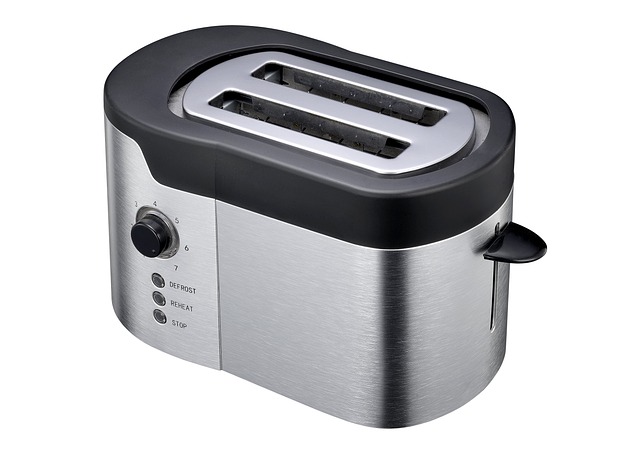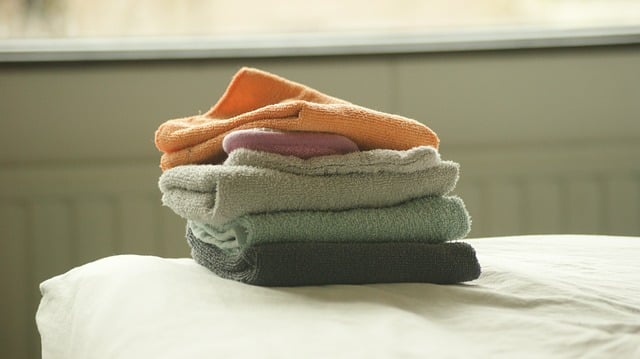Integrating and maintaining a microwave oven within your kitchen's major appliances suite is crucial for efficient meal preparation. During installation, strictly adhere to the manufacturer's guidelines, focusing on safety and proper placement for ventilation and accessibility. Regular cleaning with a damp cloth and vinegar solution will maintain hygiene and prevent food buildup. Should issues arise, consult the user manual for troubleshooting steps, which often include basic repairs like resetting or replacing parts. For professional service, always use a certified technician specialized in kitchen appliances to handle complex repairs safely and effectively. Regular maintenance checks on the door seal, power supply connections, and cooking functions are essential to prevent common problems. Clean the turntable regularly to ensure its smooth operation. By understanding how to troubleshoot common issues and performing routine checks, your microwave will remain a reliable tool in your kitchen's major appliance ecosystem for quick and efficient meal preparation over its lifespan.
For the quick-paced home chef, a microwave oven is an indispensable major appliance for swift meal preparation. This article serves as a comprehensive guide for installing and maintaining your microwave to ensure it remains a reliable asset in your culinary repertoire. From understanding the nuances of your new microwave to troubleshooting common issues, you’ll find step-by-step instructions and DIY solutions that can save you time and money. However, recognizing when professional assistance is necessary is crucial for the safety and longevity of your appliance. We’ll also offer valuable maintenance tips to keep your microwave running efficiently for years to come.
- Understanding Your Microwave Oven: A Guide to Installation and Maintenance for Quick Meal Enthusiasts
- Step-by-Step Microwave Installation: Integrating Your New Appliance into Your Kitchen
- Troubleshooting Common Issues in Microwave Ovens: DIY Solutions Before Calling a Pro
- When to Seek Professional Help for Microwave Repair: Knowing the Limits of DIY Fixes
- Keeping Your Microwave Oven in Top Shape: Maintenance Tips and Tricks for Longevity and Efficiency
Understanding Your Microwave Oven: A Guide to Installation and Maintenance for Quick Meal Enthusiasts

When incorporating a microwave oven into your kitchen arsenal, understanding its installation and maintenance is crucial for harnessing its potential in preparing quick meals. Proper placement is key; ensure your chosen location offers clearance above countertops to allow for ventilation and easy access. During installation, follow the manufacturer’s instructions meticulously, paying attention to electrical safety guidelines and securing the appliance firmly to prevent movement during operation.
Regular maintenance of your microwave oven is essential for its longevity and optimal performance. Clean the interior regularly with a soft cloth and a mixture of water and vinegar to remove food residues and avoid odors. For any repairs, it’s advisable to consult the user manual first, as many issues can be resolved by resetting the appliance or replacing parts like the turntable. Should a professional repair be necessary, contact a certified technician experienced with major kitchen appliances to handle the job efficiently and safely. Routine checks on the door seal, power sources, and cooking functions will help preempt common malfunctions, ensuring your microwave remains reliable for quick meal preparations.
Step-by-Step Microwave Installation: Integrating Your New Appliance into Your Kitchen

When integrating a new microwave oven into your kitchen, careful planning and execution are key to ensure seamless functionality and aesthetic harmony within your culinary space. The installation process begins with measuring your designated spot to confirm that the chosen model fits perfectly in terms of size and available utility connections. Ensure that the area where you plan to install the microwave is conveniently accessible for both cooking purposes and maintenance.
Before proceeding, shut off electricity to the area at the circuit breaker or fuse box for safety. With the power off, you can safely remove the old appliance. Position the new microwave in place, ensuring it’s level to prevent uneven cooking. Secure it to the cabinet with screws provided, being mindful of the ventilation space required behind and above the unit. Connect the power cord to an outlet that meets the voltage and amperage requirements specified by the manufacturer, typically a dedicated 120- or 240-volt circuit. For models with built-in exhaust hoods, connect the ductwork to vent outside your home, ensuring proper airflow to avoid moisture buildup inside the appliance. Finally, align the microwave’s antenna if it comes with one, and place the range hood filter in position for optimal performance. With these steps, your new microwave oven will be ready to serve as a reliable major kitchen appliance for quick meal preparation.
Troubleshooting Common Issues in Microwave Ovens: DIY Solutions Before Calling a Pro

When encountering common issues with your microwave oven, a few simple DIY solutions can often resolve the problem before resorting to professional help. If your microwave isn’t heating food properly, start by inspecting the interior for any foreign objects or residue buildup that might be affecting its performance. Use a soft cloth dampened with vinegar to clean the inside thoroughly. Ensure that the turntable is spinning; if not, it may need to be realigned or replaced. This simple step can rectify uneven heating issues. Additionally, check the high-voltage fuse located behind the microwave’s top panel. If it’s blown, replacing it can restore functionality.
For issues related to the microwave not turning on or responding to button presses, verify that the microwave is plugged in securely and that there isn’t a tripped circuit breaker. Inspect the door latch assembly to ensure it’s properly closed; a door that’s ajar can prevent the microwave from operating. If the lights are on but the microwave won’t cook, the magnetron might be faulty and could require replacement. Before attempting a magnetron replacement yourself, however, consult your microwave’s user manual for specific instructions, as this task involves working with high voltages and requires careful handling. Regular maintenance and troubleshooting of major appliances like microwaves can extend their lifespan and ensure they operate efficiently, making them reliable for quick meal preparation.
When to Seek Professional Help for Microwave Repair: Knowing the Limits of DIY Fixes

When a microwave oven, as part of the major appliances in your kitchen, malfunctions or requires installation, it’s crucial to assess the situation to determine whether the issue can be resolved with DIY fixes or if professional assistance is necessary. Common problems like a microwave not heating food properly or failing to turn on are often solvable with basic troubleshooting steps. However, more complex issues such as sparking inside the oven, persistent error codes, or electrical concerns should immediately prompt you to seek professional help. Attempting to repair these without proper expertise can lead to safety hazards, void warranties, and potentially cause further damage. It’s also important to consider that certain parts of a microwave may require specific tools or knowledge of safety protocols for major appliances, which are best handled by trained professionals. Regular maintenance and timely repairs can extend the life of your microwave and ensure it operates efficiently for quick meal preparations. Therefore, when in doubt or faced with significant repair needs, contacting a professional is the safest and most effective course of action to maintain the functionality and safety of your kitchen’s major appliances.
Keeping Your Microwave Oven in Top Shape: Maintenance Tips and Tricks for Longevity and Efficiency

To maintain your microwave oven in top shape, regular cleaning is paramount to ensure both longevity and efficiency. The exterior should be wiped down with a soft, damp cloth to remove fingerprints and smudges, while the interior can be freshened by microwaving a bowl of water and a lemon wedge for a few minutes to loosen any dried-on food particles. It’s essential to ventilate the appliance after this process to prevent moisture damage. Additionally, removing the turntable regularly and cleaning it separately helps maintain the microwave’s moving parts in optimal condition. For the internal cavity, using a microwave-safe sponge or a soft brush dipped in soapy water can effectively remove stubborn residues without scratching the surface.
For those looking to extend their microwave’s lifespan and maintain its performance, understanding proper usage and troubleshooting is key. Avoid overloading the microwave with too much food at once, as this can lead to improper cooking and potential damage. If your microwave begins to operate less efficiently or displays error messages, referencing the user manual for specific diagnostic codes can guide you in identifying the issue. Regularly checking the door seal for wear and tear is also advisable; a compromised seal can affect the appliance’s functionality and energy consumption. By adhering to these maintenance tips and incorporating routine checks, your microwave oven will continue to be a reliable major appliance for quick meal preparations and more.
In conclusion, mastering the installation and maintenance of your microwave oven empowers you to efficiently prepare quick meals with ease. Our comprehensive guide has walked you through understanding your appliance’s features, ensuring its secure integration into your kitchen, and equipping you with the know-how to troubleshoot common issues effectively. While DIY solutions are often adequate for minor problems, recognizing when professional assistance is necessary for microwave repair is crucial. By adhering to the maintenance tips provided, you can maintain your microwave’s longevity and efficiency, ensuring it remains a valuable addition to your collection of major appliances. With this knowledge, you are well-equipped to navigate the world of quick meals with confidence and convenience.